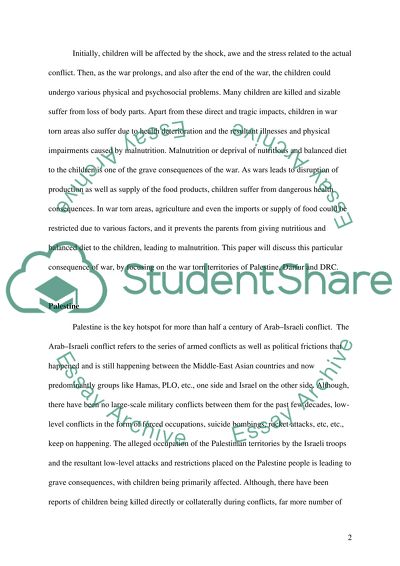Cite this document
(“The Human Consequences of War, Malnutrition among Children in Palestin Case Study”, n.d.)
The Human Consequences of War, Malnutrition among Children in Palestin Case Study. Retrieved from https://studentshare.org/social-science/1594974-methods-and-case-studies-module-essay-question-assess-the-human-consequences-of-war-case-studies-darfur-drc-palestine
The Human Consequences of War, Malnutrition among Children in Palestin Case Study. Retrieved from https://studentshare.org/social-science/1594974-methods-and-case-studies-module-essay-question-assess-the-human-consequences-of-war-case-studies-darfur-drc-palestine
(The Human Consequences of War, Malnutrition Among Children in Palestin Case Study)
The Human Consequences of War, Malnutrition Among Children in Palestin Case Study. https://studentshare.org/social-science/1594974-methods-and-case-studies-module-essay-question-assess-the-human-consequences-of-war-case-studies-darfur-drc-palestine.
The Human Consequences of War, Malnutrition Among Children in Palestin Case Study. https://studentshare.org/social-science/1594974-methods-and-case-studies-module-essay-question-assess-the-human-consequences-of-war-case-studies-darfur-drc-palestine.
“The Human Consequences of War, Malnutrition Among Children in Palestin Case Study”, n.d. https://studentshare.org/social-science/1594974-methods-and-case-studies-module-essay-question-assess-the-human-consequences-of-war-case-studies-darfur-drc-palestine.


